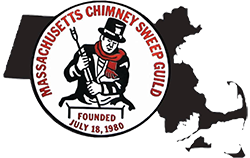FAQ
Why can I sometimes smell my chimney in the house?
If the humidity is high, the air will be heavy and it will cause a “natural” downdraft in the chimney, which will cause the air to flow into the house. Or if it is very cold outside, the cold air will also cause a “natural” downdraft as well.
How long does it take to sweep a chimney?
Depending on the conditions of the chimney and the number of flues, sweeping could take approximately 45 minutes to 2 hours.
What causes creosote buildup?
The degree and severity of creosote varies from a fine powder to a non-removable tar-like substance. Creosote is created by the incomplete combustion of firewood. Low fire temperatures can be the result of wet or unseasoned firewood or intentional burning of firewood at a low temperature (i.e. loading up wood at night in a stove and dampering down).
How do you sweep a chimney?
After an inspection is performed and the size of your flue is determined, the proper size brush is attached to flexible rods that are inserted into the flue and pushed though the chimney.
Will sweeping of my flue make my house messy?
NO, our members take every step to ensure maximum cleanliness. This includes the usage of clean tarps and a commercial vacuum to eliminate odors in the customer’s home.
How often should I get my chimney swept?
The National Fire Protection Association (NFPA) recommends that a homeowner have their chimney inspected yearly and serviced as needed.
How often should I have my chimney inspected?
The National Fire Protection Association recommends that you have your chimney inspected yearly.
What if I don’t have a fireplace?
Many homes have a chimney flue serving the heating system. Unswept furnace flues are a carbon monoxide threat in addition to fire hazard.
Do I need a rain cap for my chimney?
Properly-sized rain caps keep out animals, leaves, and masonry-destroying water, and prevent spark from igniting combustible materials in the area.
What is a chimney liner?
A flue lining in a masonry chimney is defined as “A clay, ceramic, or metal conduit installed inside of a chimney, intended to contain the combustion products, direct them to the outside atmosphere, and protect the chimney walls from heat and corrosion.” Although building codes vary from one locality to another, the installation of flue lining has been recommended since the early part of this century, and indeed most fire codes now mandate liners.
How can you protect against carbon monoxide poisoning?
- Have your furnace, fireplace, wood, gas, coal, or pellet stoves inspected and swept before each heating season. Have your fuel burning appliances checked regularly as well.
- Use non-electrical space heaters only in well-ventilated areas.
- Do not start or idle gas lawnmowers, cars, trucks, or other vehicles in an enclosed area, even with the garage doors open.
- Vent fuel-burning appliances outside whenever possible.
- Do not ever use a charcoal grill inside your home, garage, tent, or camper.
- Do not use portable heaters or lanterns while sleeping in enclosed areas such as tents, campers, and other vehicles. This is especially important at high altitudes, where the risk of CO poisoning is increased.
- Read and follow manufacturer instructions and precautions that come with any fuel-burning device. • Do not ever use a gas oven for heat inside your home.
- Use an approved carbon monoxide detector with an audible alarm inside your home.
